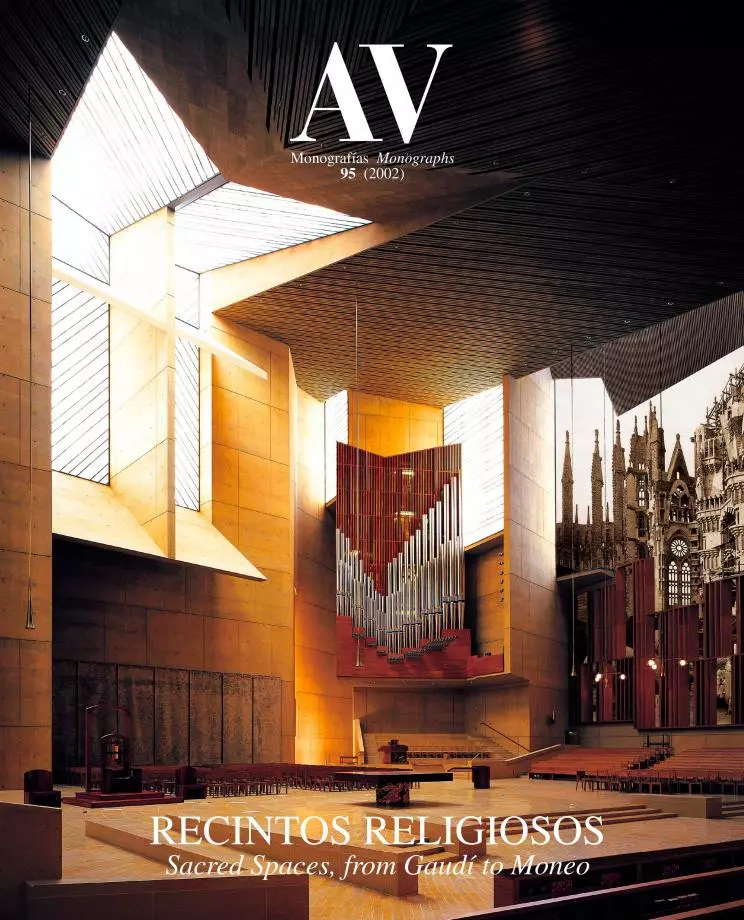Corpus Christi Church, Aachen
Rudolf Schwarz- Type Religious / Memorial Place of worship
- Material Concrete
- Date 1929 - 1930
- City Aquisgrán
- Country Germany
- Photograph Ann und Jürgen Wilde
Colleague and disciple of Dominikus Bohm, RudolfSchwarz was an architect committed to Catholic liturgical renovation in the agitated cultural context of the Republic o f Weimar. His Corpus Christi church is at once canonical and modem: this large concrete box with a slightly sloped roof afew high windows, an empty and white interior over a plan o f black stone takes its motifsfrom the radical modernity o f the moment, which Schwarz explicitly defends. Columns, facades, windows and arches no longer make sense. The Christian Einfiihlung has been replaced by a liturgical version o f the neue Sachlichkeit.
For the modems o fthe Bauhaus, the church was a taboo, anachronistic and reactionaryproject. But Schwarz does not hesitate to throw overboard much of the secular burden of Catholic iconography and use the image of industrial modernity to reinterpret the single nave temple, that he extends on one side as a chapelfor other uses. As customary, the altar presides the 21 meter high central nave. But except for the bell tower, nothing differentiates this church, known as ‘thefactory’, from a manufacturing shed. Maybe the architect relied on his knowledge of orientalspirituality, and in this way the pure and white space of the church may well be understood as an allusion to Heaven and Earth, Tiferet and Malkut, and to the union ofopposites. A solitary silver chest over the black stone of the altar, the tabernacle, gathered the two worlds in an almost absolute image of the assembly as an experience o f the totality of the new, divine and human man.
The almost complete absence of images in this church is a voluntary relinquishment. For Romano Guardini, the theologian ofliturgical renovation, it is not so much a void but a tremendous quiet, and here it istrue: all images have been silenced tofavor a unique, intense perception. The experience seems to return to origins and, as in thefirst centuries, the desire to represent divinity is replaced by the experience ofeternity, something shapeless that does not fit into any given style. The silence o f the white and black nave is almost unbearable if notperceived as apowerfulsign, orifthe radical absence o fimagery is appreciated merely as an uncomfortable lack of symbols. That is why, during the Nazi regime, a large figure of Jesus Christ - the Superman - was placed at the back of the empty altar, in an attempt to recover the comfort of an immortal leader at the head of the church, and mitigate the disquieting presence out o f time and without attributes...[+]







